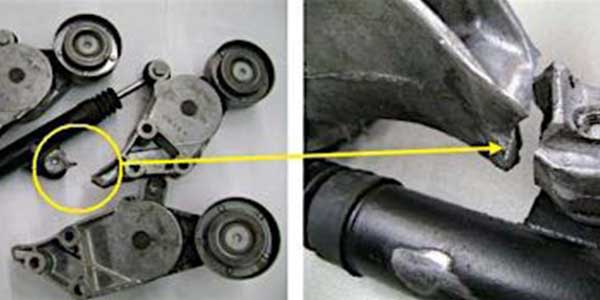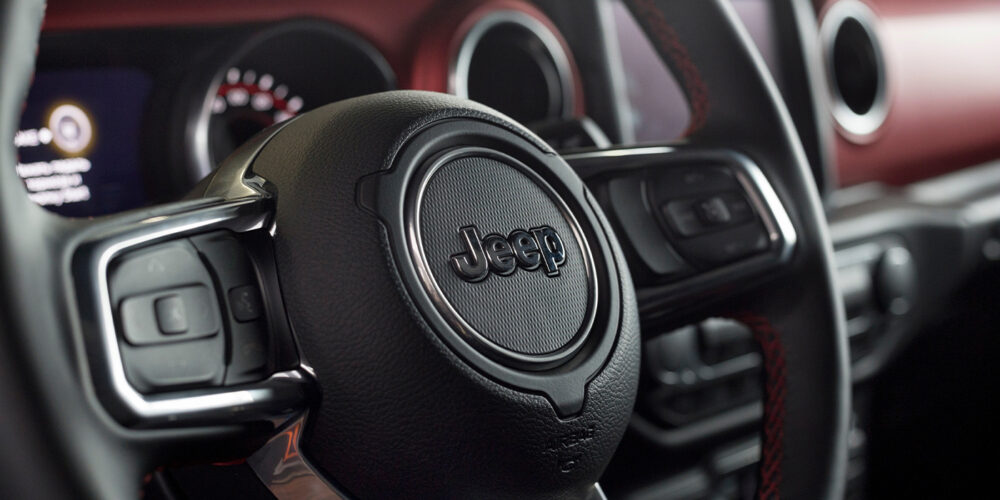Models: 1998-2004 VW Beetle, Golf, Jetta
It is possible that excessive tensioner movement or a broken tensioner assembly may be observed as illustrated below.
This type of failure is the result of severe vibrations in the accessory belt drive system. While a broken tensioner may be the result, the root cause often lies elsewhere in the system. These vehicles come from the factory with an overrunning alternator decoupler Pulley. OAD pulleys are engineered to reduce noise, vibration and harshness in the accessory belt drive system while reducing belt tension. A reduction in belt tension will lead to an increased lifecycle of the accessories and improved gas mileage. However, OAD pulleys are wear items and will eventually fail. If left unchecked, a failed OAD pulley will result in excessive and abnormal vibrations in the belt drive system, which may eventually lead to the catastrophic tensioner failure pictured above.
Another often-overlooked cause of the broken tensioner seen above is the result of incorrect servicing of the OAD pulley. If an OAD Pulley has been mistakenly replaced with a one-way clutch pulley or a solid pulley, the belt tensioner is forced to absorb excessive and irregular vibrations that otherwise would not exist.
Ultimately, both of these scenarios will result in the hydraulic strut attempting to compensate for the additional vibrations in the belt drive system. Unfortunately, the tensioner is not designed to withstand these conditions and may eventually break, as pictured above. Gates recommends replacing the ADP whenever the 38192 tensioner is replaced.















